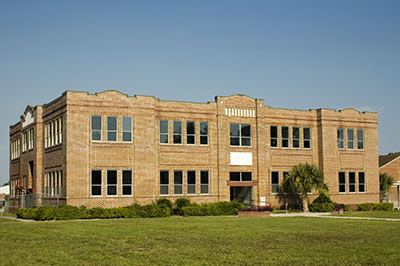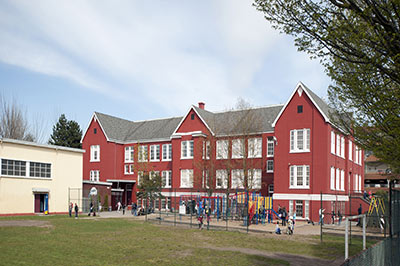Achieve Charter School in Paradise Valley, CA shares some of the facilities challenges faced by charter public schools located in rural areas.
Tag: Charter Schools
AN ANALYSIS OF THE CHARTER SCHOOL FACILITY LANDSCAPE IN CALIFORNIA
Charter School Facilities Initiative, 2015
The National Charter School Resource Center ("Resource Center"), the Colorado League of Charter Schools (“League”), the National Alliance for Public Charter Schools (“Alliance”) and the California Charter Schools Association (“CCSA”), published this report, entitled “An Analysis of the Charter School Facility Landscape in California,” detailing the status of charter school facilities in the state.
In the spring of 2014, the above organizations worked to collect evidence about charter school facilities and facilities expenditures in the state of California. The data collection in California was supported by the Charter School Facilities Initiative (CSFI); a national project developed by the League to research charter school facilities and facilities funding across the country. Since 2011, the League’s work, through the CSFI, has been supported by the U.S. Department of Education’s Charter Schools Program through a subcontract with the Resource Center.
An Analysis of The Charter School Facility Landscape in Rhode Island
Charter School Facilities Initiative, 2013
The Rhode Island League of Charter Schools, the Colorado League of Charter Schools, and the National Alliance for Public Charter Schools publish this report, entitled “An Analysis of the Charter School Facilities Landscape in Rhode Island,” detailing the status of charter school facilities in the state.
In winter of 2013, the above organizations worked to collect evidence that would accurately portray both the adequacy of charter school facilities1 and the average amount of operating funds spent by charter schools on facilities. Collectively, the results described in this report provide evidence that charter school students in Rhode Island do not have access to the same sized facilities, facilities amenities and/or funding compared to traditional public school students in the state.
Diverse Outdoor Learning, Work Programs Open to Charter Schools
National Charter School Resource Center, 2013
A wide range of outdoor work and learning opportunities are available to charter school students, among others. The programs are offered through a variety of federal agencies and partnerships with nonprofit organizations. Although many of the programs have existed for years, connecting students with education involving parks and wilderness areas has new emphasis. For example, in 2012, the U.S. Department of Education and the U.S. Department of the Interior announced an agreement to expand outdoor education and access for students attending high-need schools. Over the years, programs have included those directly run by federal agencies, as well as those supported by grants or cooperative agreements with nonprofit organizations that can also include private funding. This feature of the National Charter School Resource Center monthly newsletter provides examples of programs, including a charter school that was started to serve Youth Conservation Corps (YCC) participants, and resources to help charter schools connect with opportunities. Some of the diverse youth development and land conservation programs that exist across the country operate throughout the year, and others focus on summer. Programs include development of skills such as using a chainsaw, heavy equipment operation, environmental planning, and other training related to land conservation and restoration. Compensation, in addition to the experience, can include hourly wages, stipends, scholarships, and credits that count toward graduation.
Charter Schools and Qualified School Construction Bonds
National Charter School Resource Center, 2013
The Qualified School Construction Bond (QSCB) program, a federally subsidized borrowing program initiated as part of the 2009 American Recovery and Reinvestment Act, continues to be a source of support for charter school facilities development. A total of $22 billion in QSCBs were authorized nationwide, and some remain unused. For example, New Jersey announced in March 2013 an allocation of $125 million dedicated specifically for charter schools. In 2010, New Jersey made a $30 million allocation for charter schools, all of which was used, according to the New Jersey Economic Development Agency. This feature of the National Charter School Resource Center's monthly newsletter focuses on the QSCB program and provides information about the New Jersey effort, an explanation of how such debt arrangements work, and resources to further pursue the topic.
Charter School Challenge: Will This Facility Work?
National Charter School Resource Center, 2013
Some charter schools have the wherewithal to build their own facilities to their own specifications. But typically, charter operators are faced with the challenge of making do with what they can find and what they can afford. A key step in the process is determining whether in fact a prospective site will work. In some cases, it is necessary to make the most of an opportunity. In others, the answer is thanks, but no thanks. It takes strength and the right approach to know the difference. This feature of the National Charter School Resource Center monthly newsletter provides information about site evaluation for charter schools in Georgia, the challenges a New York City charter school encountered when moving into a new facility, and additional resources on the topic.
23 things you need to know about charter schools
Cassidy, 2013
When Minnesota passed the nation’s first law permitting charter schools, in 1991, no one could have predicted that more than six thousand such schools would be operating 22 years later. Nor could anyone have known that 18 cities would have at least 20% of their students enrolled in charters.
Today, charter schools are educating just under 5% of public school children in the U.S., according to the National Alliance of Public Charter Schools (www.napcs.org). But don’t let that 5% figure fool you: Demand for charters is exploding, even as many public school districts are closing schools. In Massachusetts alone, 45,000 children are on waiting lists to get into charters, according to the Massachusetts Charter Public School Association (www.masscharterschools.org).
How are charter schools funded in Pa.?
Hardy, 2015
What makes charter school funding a point of contention?
With education funds scarce in the Commonwealth of Pennsylvania, the debate over how charter schools get their money has never been more polarized.
The stakes are huge: In the 2013-14 school year, 176 charter schools educated 129,000 students statewide, at a cost to Pennsylvania school districts of more than $1.2 billion.
About half those schools and students are located in Philadelphia; they account for 30 percent of the Philadelphia School District’s operating budget.
Charter School Facilities
Cunningham, 2011
Research shows a significant relationship between the condition of school facilities and student performance.1 Public schools of all kinds find it difficult to provide adequate learning facilities with their limited budgets. Charter schools in particular, however, struggle to provide school facilities that match the quality of traditional public schools.
As charter schools take their place as an established component of public edu- cation systems state legislatures will face questions about the kind of facilities to which charter schools have access. Included in this discussion are policy options for states to consider to ensure adequate funding for charter school facilities, and the inequities that exist between traditional and charter school facilities due to charter schools’ inability to secure such funding.
Making charter school facilities more affordable – State-driven policy approaches
DOE - Office of Innovation & Improvement (2008).
This guide showcases charter school facility laws and practices that have been developed to tackle the facilities challenge in eight states and Washington, D.C










